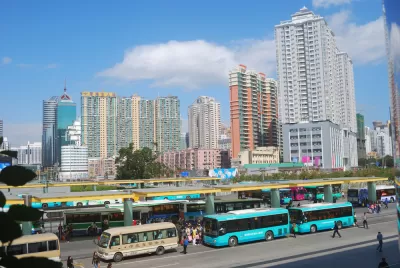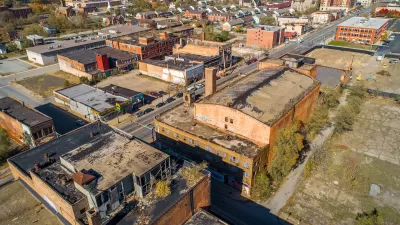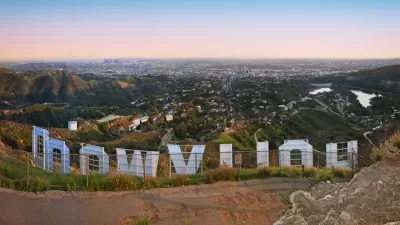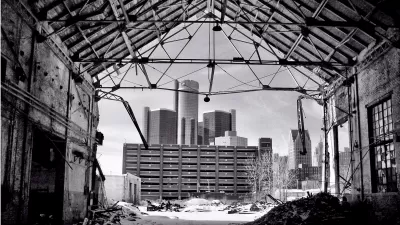More than 900 Chinese cities are continuing to plan for growth even as their populations shrink.

Nearly one-third of Chinese cities are losing population—more than anywhere else in the world, according to a new study from Tsinghua University. That finding, obtained by monitoring nighttime lights in more than 3,300 cities over three years, conflicts with official data anticipating urban growth throughout the country.
"The Chinese cities under the greatest pressure of shrinking include those heavily dependent on natural resources, such as the coal mining town of Hegang in Heilongjiang province," Sidney Leng reports in South China Morning Post. Many are located in China's rust belt.
A review of 60 cities' urban development plans showed that many municipalities are still relying on "inflated" projections, leading them to undertake major infrastructure and development projects designed to accommodate population growth that is not likely to occur.
Researchers worry that this trend marks a recipe for urban decay, leading to empty high-rises and unused industrial developments. "Many landscapes in the US rust belt could be the future of some of China’s shrinking cities," one researcher told the Post.
FULL STORY: Almost one-third of Chinese cities are shrinking, but urban planners told to keep building

Rethinking Redlining
For decades we have blamed 100-year-old maps for the patterns of spatial racial inequity that persist in American cities today. An esteemed researcher says: we’ve got it all wrong.

Planetizen Federal Action Tracker
A weekly monitor of how Trump’s orders and actions are impacting planners and planning in America.

Walmart Announces Nationwide EV Charging Network
The company plans to install electric car chargers at most of its stores by 2030.

Seattle’s Pike Place Market Leans Into Pedestrian Infrastructure
After decades of debate, the market is testing a car ban in one of its busiest areas and adding walking links to the surrounding neighborhood.

The World’s Longest Light Rail Line is in… Los Angeles?
In a city not known for its public transit, the 48.5-mile A Line is the longest of its kind on the planet.

Quantifying Social Infrastructure
New developments have clear rules for ensuring surrounding roads, water, and sewers can handle new users. Why not do the same for community amenities?
Urban Design for Planners 1: Software Tools
This six-course series explores essential urban design concepts using open source software and equips planners with the tools they need to participate fully in the urban design process.
Planning for Universal Design
Learn the tools for implementing Universal Design in planning regulations.
City of Moorpark
City of Tustin
City of Camden Redevelopment Agency
City of Astoria
Transportation Research & Education Center (TREC) at Portland State University
Regional Transportation Commission of Southern Nevada
Toledo-Lucas County Plan Commissions





























